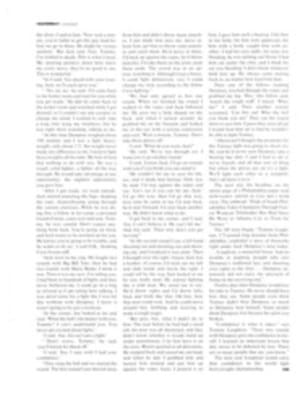
IF THE BULLS AND THE BEARS HAVE YOU BUFFALOED, TRY OUR FOXY FORMULAS
The theory that cycles of sunspots can be related to the ups and downs of the stock market has been kicked around by economists for about half a century, but with inconclusive results. However, data accumulated over the last 15 years indicate that baseball batting averages and the results of Super Bowl football games are excellent guides to stock fluctuations.
The Baseball Connection—when batting averages go up, the market goes down, and vice versa—has held true for an impressive 12 of the last 14 years. And the Football Connection has a perfect record, 12 for 12. This theory says that when the Super Bowl winner is a team that was originally a member of the NFL, the market goes up; when it's a team that started in the AFL, the market goes down. Thus, as soon as the Pittsburgh Steelers and Dallas Cowboys qualified for the Super Bowl last Jan. 7, you could be sure the winner would be an original NFL team, and you should have bought stock, feeling confident that the market index in December 1979 would be higher than it was in December 1978.
No one has offered an explanation for the football pattern, even though a 100% correlation over a 12-year period, with an 11-month lead time in each case, seems a lot more attractive than some of the more orthodox formulas for investment decisions. But a deduction has been advanced for the baseball correlation, which has proved only 86% accurate. It goes this way: when the stock market goes down, batters stand in there a little tougher against the curveball.
This reasoning is based on the fact that, by the nature of the tasks involved, a major league batter needs more day-in, day-out motivation than a pitcher. Pitchers don't compete every day, and when they do, they are the center of the action and already in a high state of concentration. Besides, a pitcher needs no extra physical courage once he accepts the risk that a ball may be hit back at him.
For batters it's different. The natural instinct to dodge a high-speed missile aimed at one's head or body is a handicap that every batter must overcome. It's quite possible a batter overcomes it more thoroughly when he knows his non-baseball investments are going down, and feels a little smug and self-protective when they are going up. And his batting average (as distinct from key hits in dramatic situations) reflects his ability to generate repeated and consistent concentration.
Such a theory assumes that most players have money invested. Since the middle of the '60s, this is probably true, both as a general pattern (there has been a nationwide increase in small investors) and specifically (athletes' salaries, needless to say, have risen dramatically).
That assumption implies that the situation was different before the '60s, and history offers some support for this idea. In the 20 years or so preceding 1965, the yearly-averages for the stock market and for batters show just random fluctuation. But between 1920 and 1930, another era in American life when "everybody" was "in the market." the batting-up stocks-down correlation held true seven times in 11 years. In the years 1931-41, during the Depression and on into World War II, the theory held true only twice in 11 years.
What does all this really indicate?
Perhaps only that you can pick a Super Bowl winner by studying the sunspots.
Consider these tables:
[originallink:10602161:70827]

